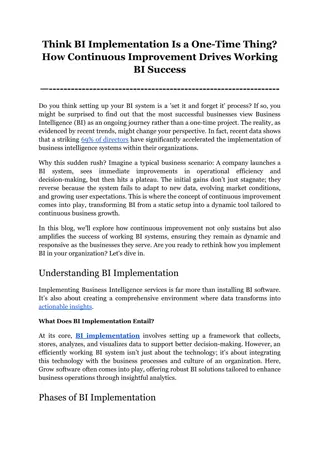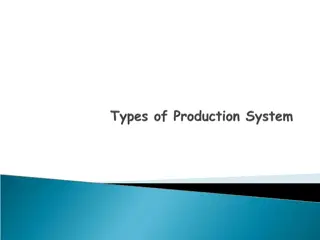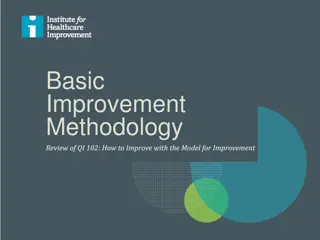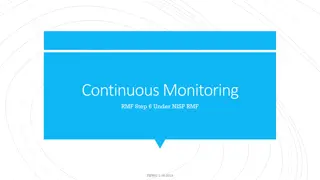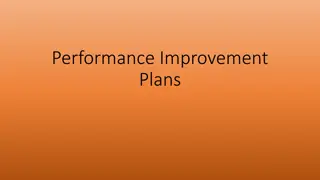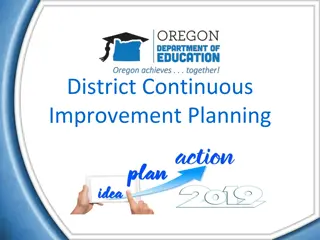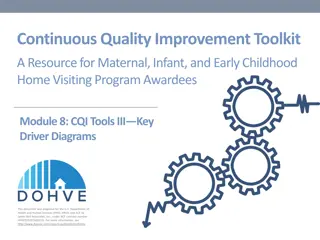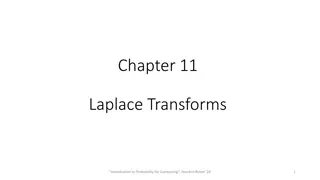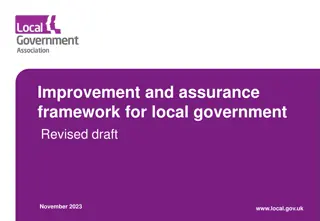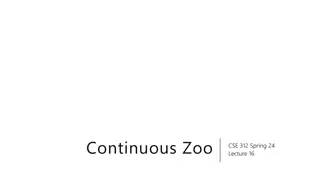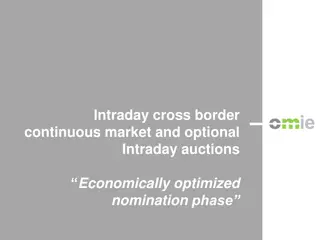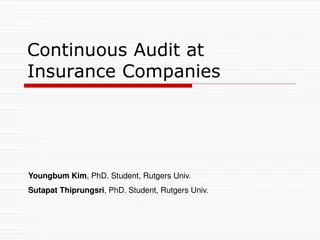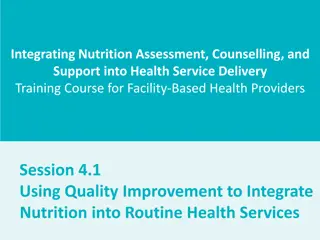CONTINUOUS IMPROVEMENT
Results Work is Adaptive Work with a focus on Continuous Improvement. It involves experiencing loss, creating accountability, and rooting in failure and learning. The process includes pre-planning, understanding others' perspectives, expanding work to a broader level, and implementing strategies with shared performance measures. Tools and methods such as Action Commitment Ratings, Factor and Root Analysis, and PDSA Rapid Cycle Quality Improvement are utilized to support the improvement process and achieve scope and scale.
Download Presentation

Please find below an Image/Link to download the presentation.
The content on the website is provided AS IS for your information and personal use only. It may not be sold, licensed, or shared on other websites without obtaining consent from the author.If you encounter any issues during the download, it is possible that the publisher has removed the file from their server.
You are allowed to download the files provided on this website for personal or commercial use, subject to the condition that they are used lawfully. All files are the property of their respective owners.
The content on the website is provided AS IS for your information and personal use only. It may not be sold, licensed, or shared on other websites without obtaining consent from the author.
E N D
Presentation Transcript
CONTINUOUS IMPROVEMENT A Driver of Results Work
Results Work is Adaptive Work New learnings Experiencing loss Creating accountability Experimental Rooting in failure and learning
Focus on Continuous Improvement Working in High Action and High Alignment Action Alignment Pre-Planning - data collected to fully understand the current situation, to identify a baseline and a target; to start the strategy development process Actions and behaviors focused on understanding others interests, points of view and potential contributions Expanding the work of the individual/team to the population level result; Having difficult conversations required for alignment Planning/Preparing the developing of strategies, the positioning of resources, identifying missing partners Execution implementing strategies and programs, using performance measures to assess impact Developing shared strategies, shared performance measures Alignment for Scope/Scale Thinking and acting politically to shift systems in order to create highest impact for results work Scope and Scale expanding the work to broaden reach and/or impact
Tools and Methods for Continuous Improvement: Continuous improvement moves are not incremental. They are adaptive in nature and designed to impact the status quo Action Commitment Ratings (First line of QI) Before/After Action Reviews Factor and Root Analysis Quality Improvement tools and methods are used to support: Critical Incident Work Action that executes to scope and scale Tracking of Performance Measures Alignment that supports leveraging the relationships and contributions of partners to achieve scope and scale PDSA Rapid Cycle Quality Improvement Data Development Agenda Cognitive/Implicit Bias Thinking and Acting Politically Systems Analysis
Improving the Effectiveness of the Work Action Commitments CI Questions to Explore Factor Analysis Are these practices moving the work from pre-planning towards execution and then scope and scale? Performance measures Working in High Action High Alignment What are the small test of change that can be implemented to determine if strategies developed are addressing the priority factors identified? Are they helping to create greater alignment to support execution and scope and scale? What tests of change can be used to improve impact of the work?
When Things Dont Go As Planned Before/After Action Reviews Critical Incidents/Critical Response Failure Analysis Pain Point CI Questions to Explore: What is the learning and practice agenda? What can improve our working in HA/HA in order to execute towards a shared result What are the small tests of change that can be tried based on what we have learned?
PDSA Actions to Test Change Questions to ask What are we trying to accomplish? How will we know that change is an improvement What change can we make that will result in improvement PDSA can improve Quality and Power of Action Commitments The development and implementation of strategies The execution towards performance measures (strategy, program, and/or role level) Experimenting new actions when things don t go as planned
Repeated Use of the PDSA Cycle Model for Improvement Changes That Result in Improvement What are we trying to accomplish? A P How will we know thata change is an improvement? S D Implementation of Change What change can we make that will result in improvement? Test new conditions Multiple PDSA Cycles -- Sequential Building of Knowledge include a wide range of conditions in the sequence of tests before implementing the change A P S D Follow-up Tests Hunches Theories Ideas Small Scale Testing
Dos and Donts of PDSA? When to use PDSA For trying changes to existing processes, strategies, methods, etc. For trying new processes , strategies, methods, etc. For trying new tools For trying new measures Don t need to use PDSA: For specific project tasks For gathering data or information (unless you want to learn about the data process) For general planning or setting goals, objectives
Successful Cycles to Test and Adapt Scale down size of test (# of patients, location) Conduct the test over a short time period Test with volunteers Do not try to get buy-in or consensus for the test Collect useful data during each test Think a couple of cycles ahead Plan multiple cycles to test and adapt change In later cycles, test over a wide range of conditions
Some misuses of PDSAs Tendency to do too much in one PDSA, instead of several cycles Tendency to use PDSAs for information gathering or collecting data on a measure rather than beginning to test an idea for change Tendency to use PDSAs to complete all tasks on the project

 undefined
undefined







